18 percent of people are cross dominant, with their dominant eye different from their dominant hand.
Interestingly, 17 percent of people have no identifiable dominant eye.
This works better with long gun than with handgun.
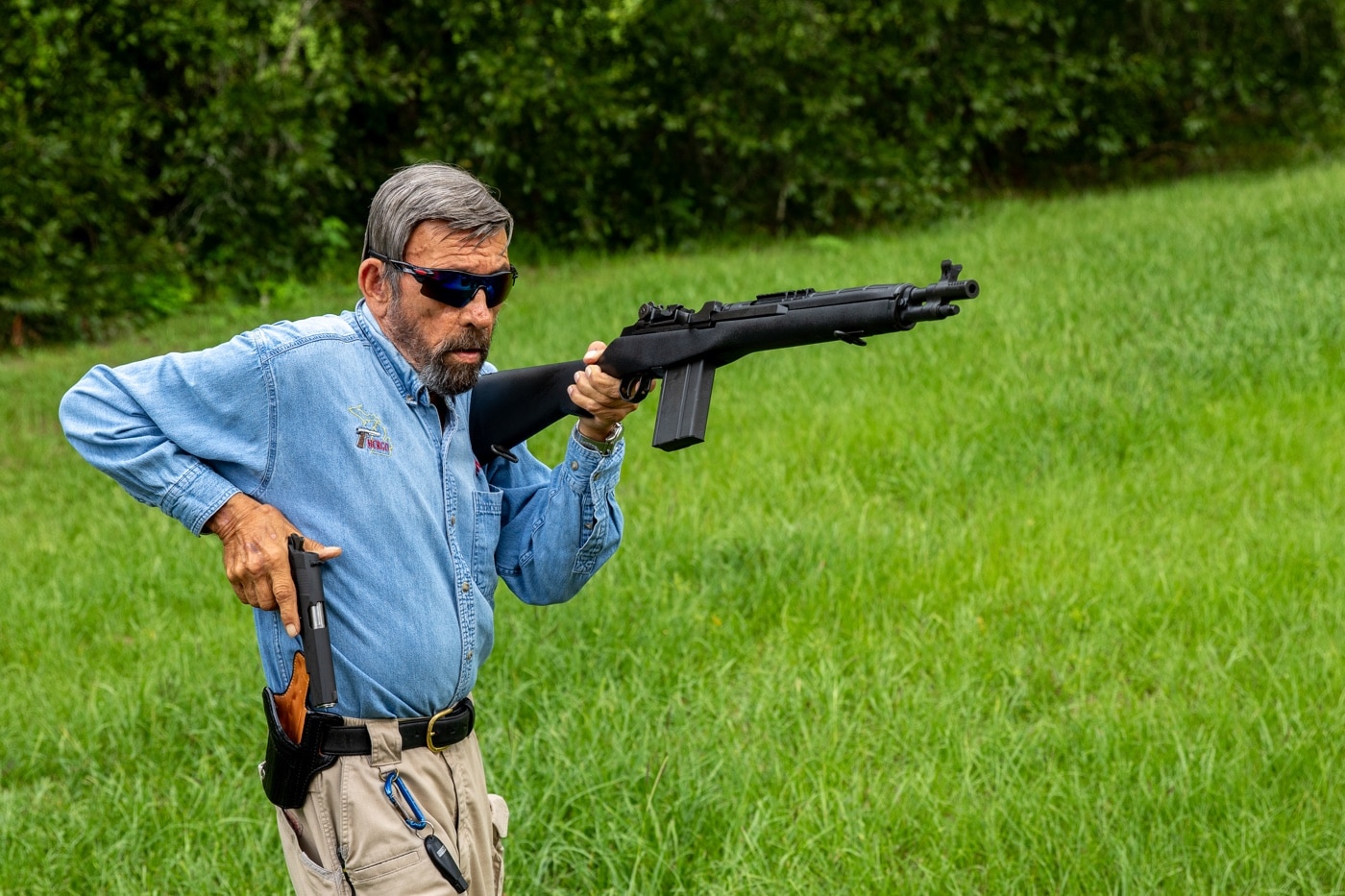
Do you know if you are a cross-dominant shooter, and how it might affect how you shoot a long gun or a handgun? Image: Gail Pepin
[Be sure to read:How to Determine Eye Dominance.]
It makes sense to use the dominant arm up front to track moving targets or between multiple targets.
Again, its a mirror image for southpaws.
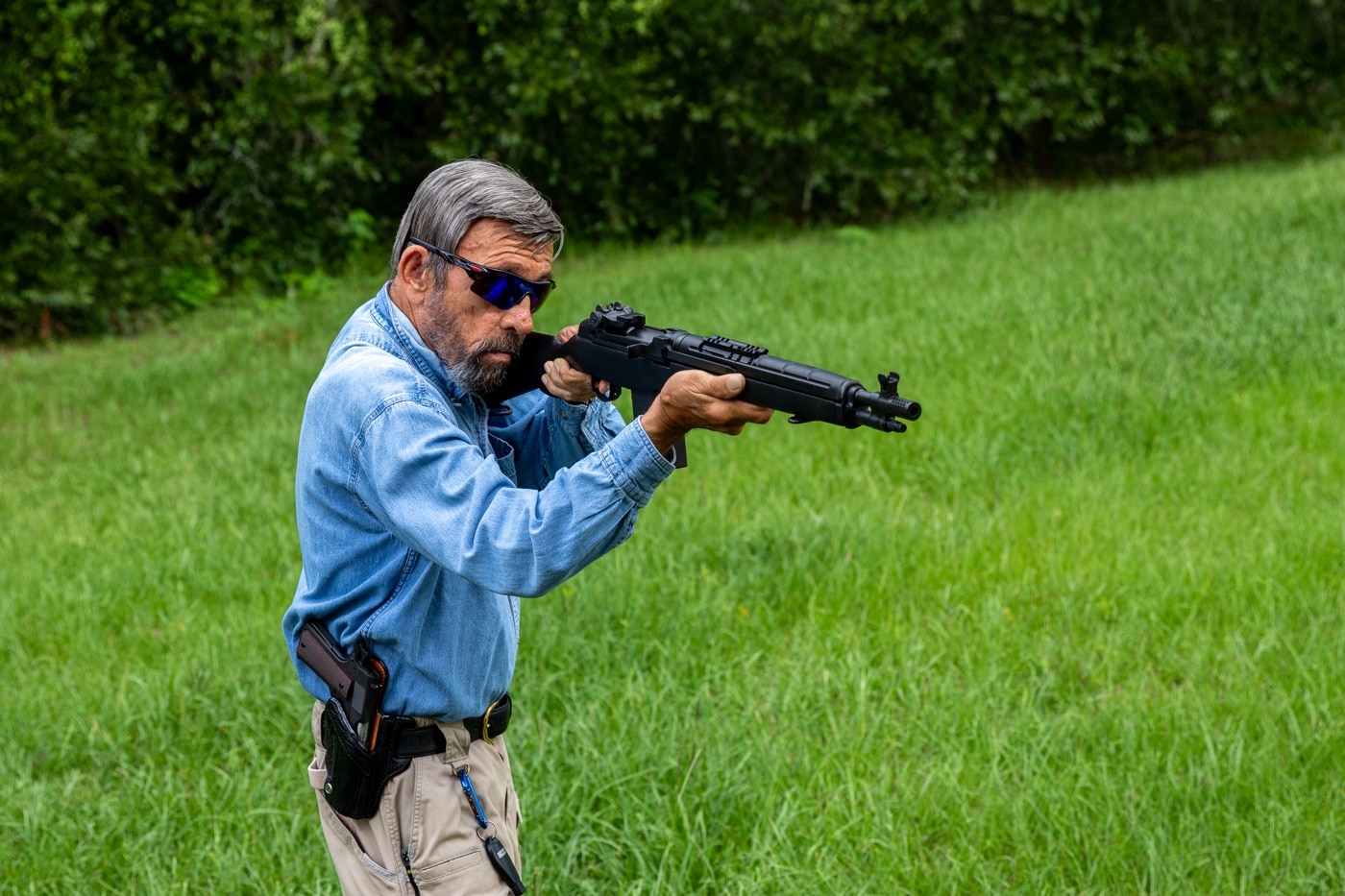
The author believes it is sensible for a cross-dominant shooter to shoot a long gun, like this Springfield SOCOM-16 .308, from the dominant eye shoulder. Image: Gail Pepin
In theisosceles stancethe chest is square to target or threat, and the arms extended to equal distance.
This brings the gun to the centerline of the body and head.
All of the above are two-handed techniques.
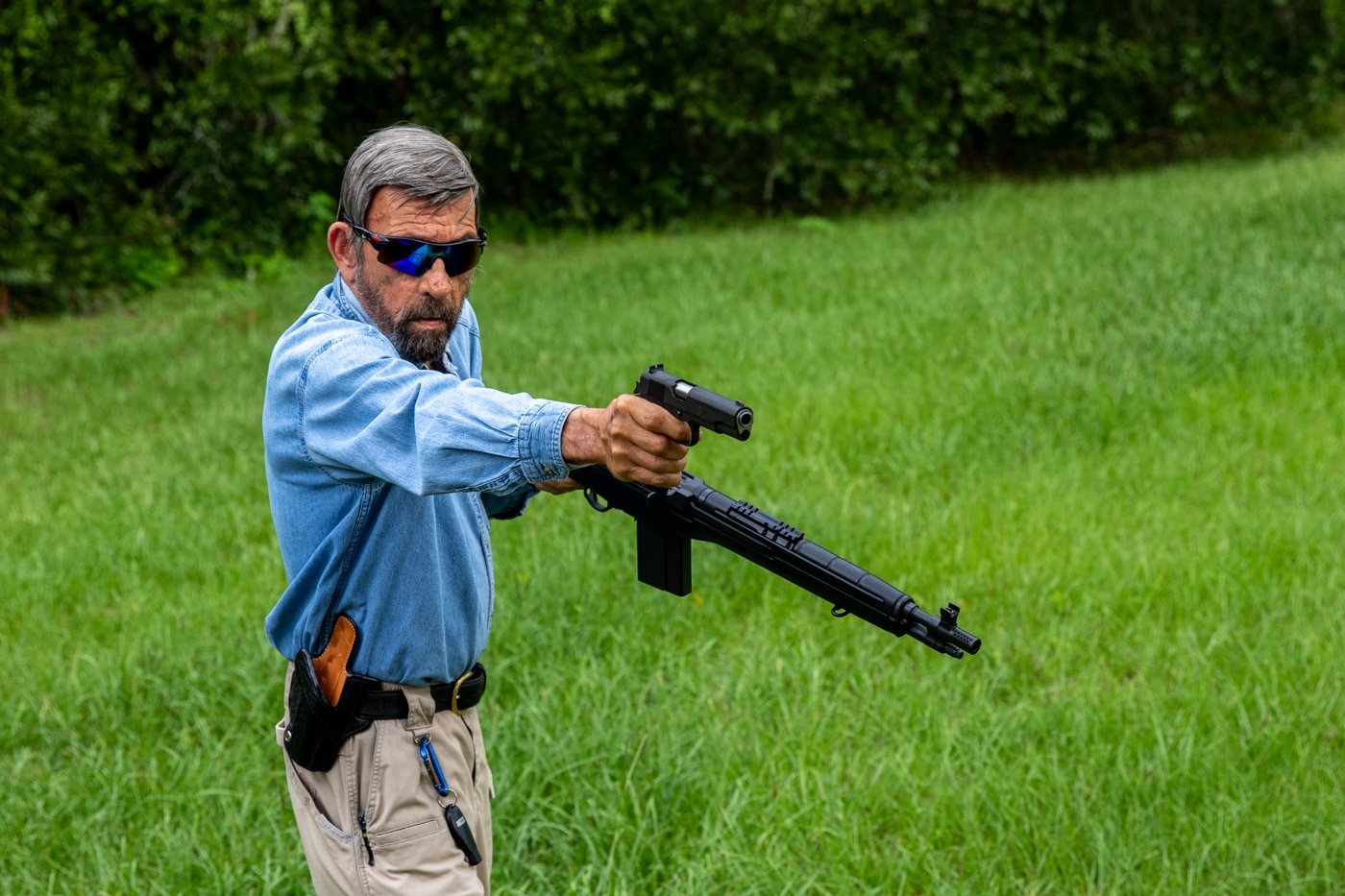
If your long gun is too heavy to be held at shoulder, the shooter can tuck the comb of stock into the armpit when transitioning to a handgun. Image: Gail Pepin
Conclusion
Many great shooters have been cross-dominant.
World champion David Sevigny, for example, and former national IDPA champion Tom Yost.
Both my daughters are cross-dominant, and both won national pistol titles in their teens.
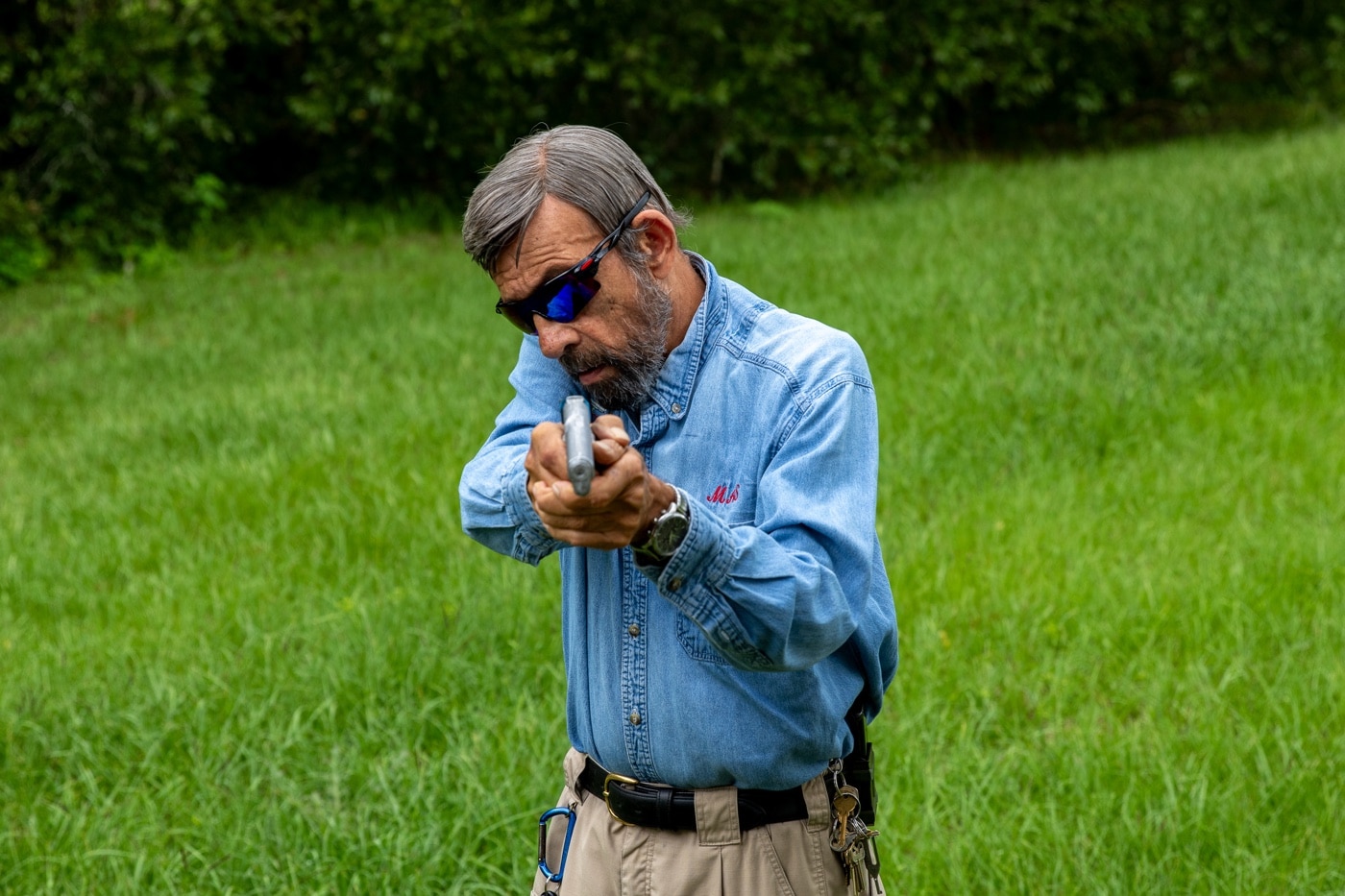
The author demonstrates cross-dominant pistol shooting with Classic Weaver stance: drop your head to the gun side shoulder, and your opposite eye is now in line with the gun hand. Image: Gail Pepin
Its simply a matter of adaptation.
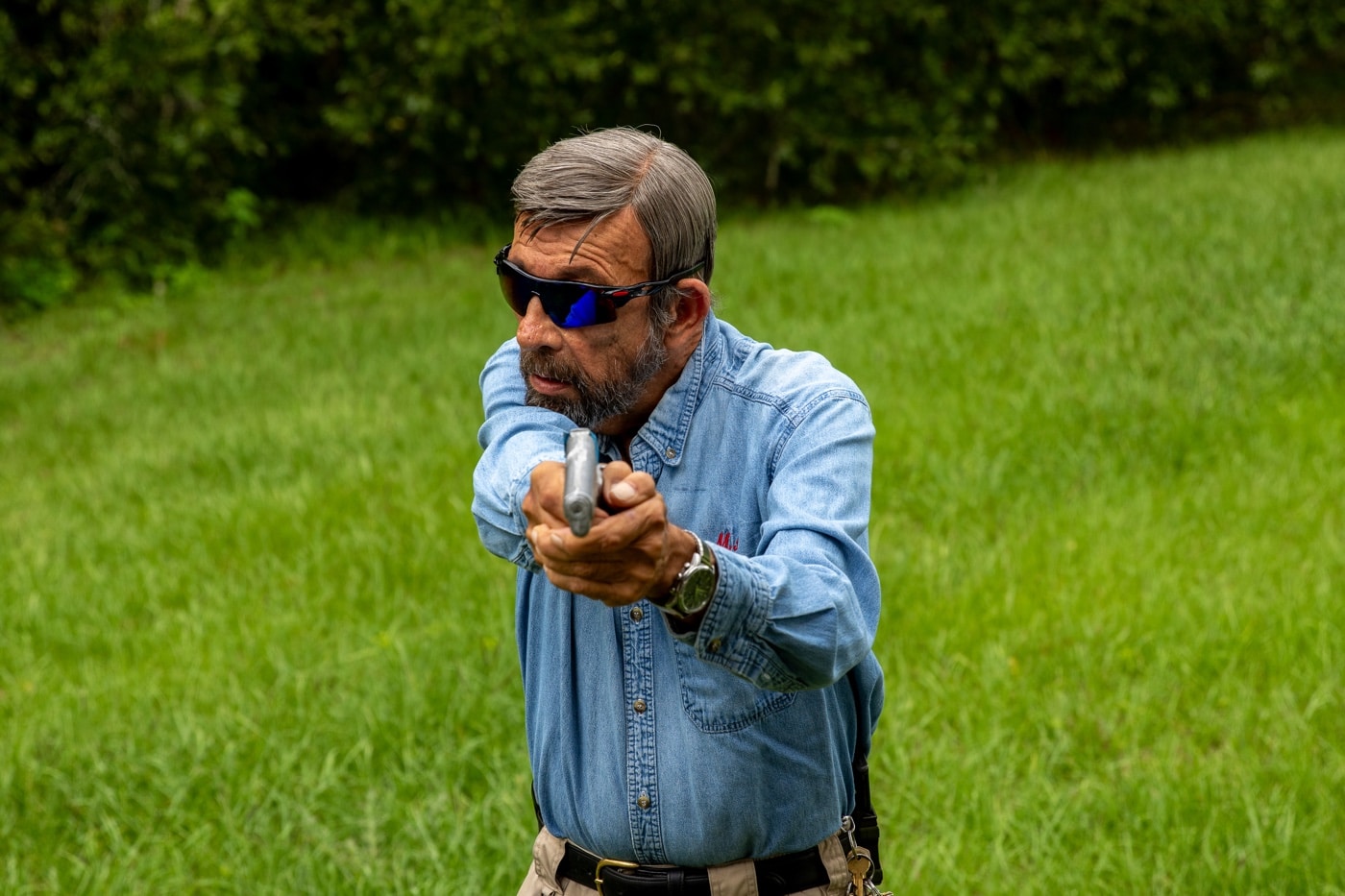
Cross-dominant shooting with theChapman modification of a Weaver stance: Keep your head straight up and bring your jaw to the gun arm which aligns your left eye with your right hand. Image: Gail Pepin
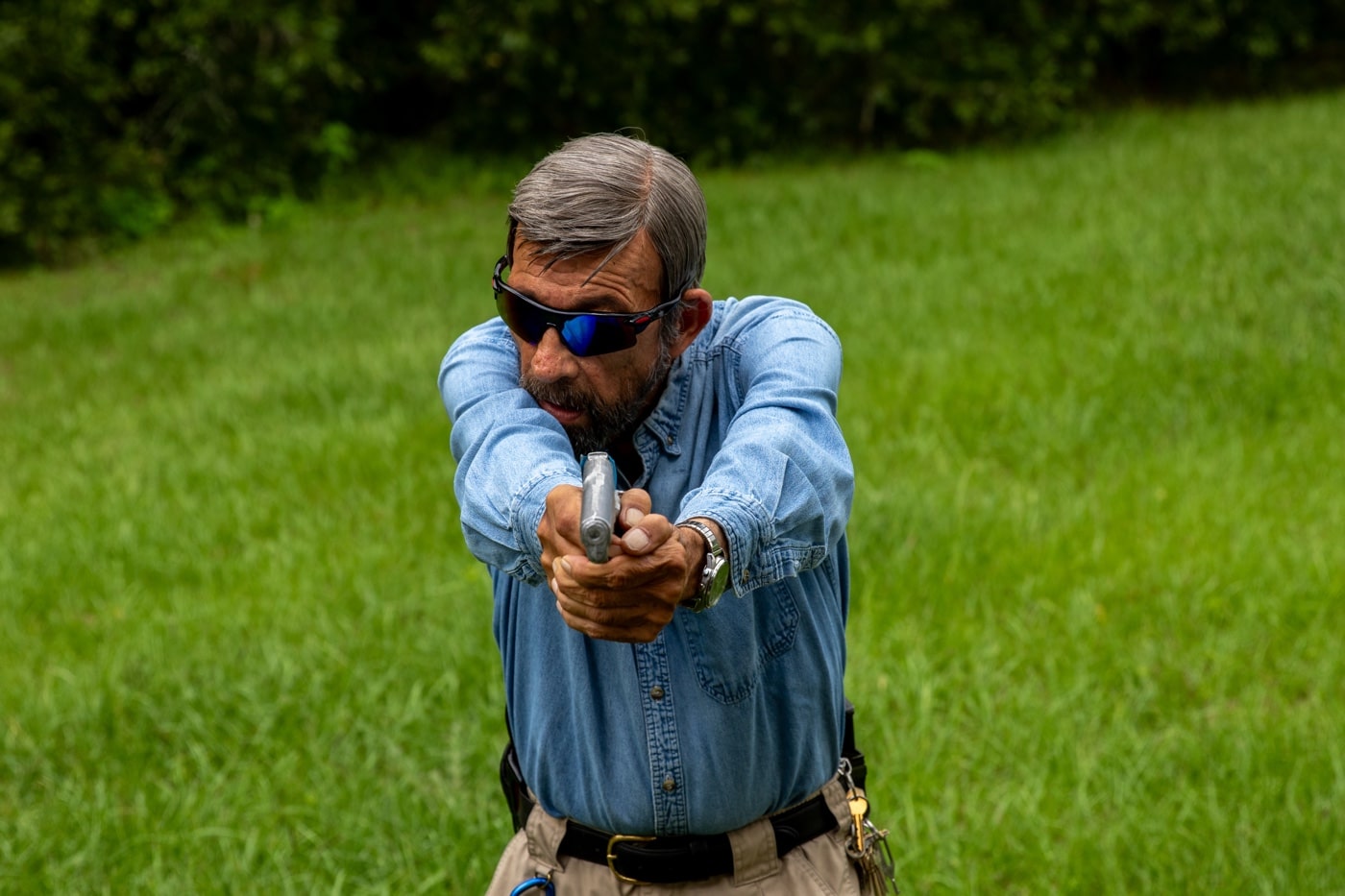
Cross-dominant handgun shooting with the isosceles stance: Your gun is at the centerline of your head allowing you to easily bring your “opposite eye” in alignment with the pistol’s sights. Image: Gail Pepin




